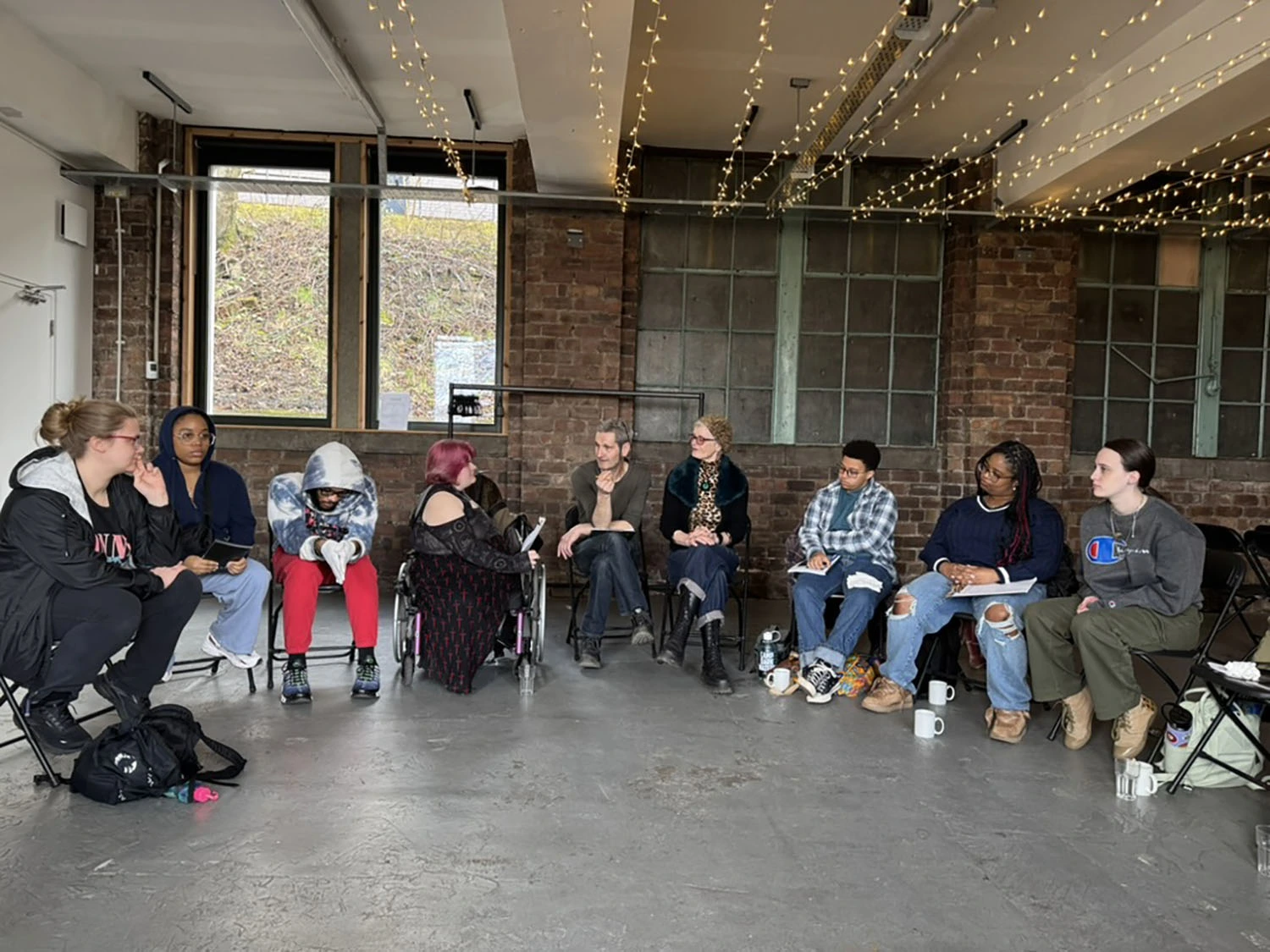Preview the World Students Envision Climate Futures Through Art and Storytelling in Glasgow-Inspired Exhibit

Students in Arcadia’s “Imagination Rebellion: Art as a Pathway to Climate Justice” Preview the World course reimagined what climate justice could look like by creating an online exhibit titled The Museum of Civic Imagination, while abroad in Glasgow, Scotland. This new exhibit blends storytelling, speculative design, and community-based learning into an immersive vision of the future.
Led by Professor of Education and Faculty Director of the Center for Teaching, Learning, and Mentoring (CTLM) Dr. Ellen Skilton and Assistant Director for the CTLM Monica Day, the semester-long course examined the power of imagination and creativity in addressing the climate crisis. Then, when the Preview class traveled to Scotland over spring break, they connected with artists and organizations using eco-art to engage communities in future-building.
“We felt all along that we were creating an experience that really resonates with the best intentions of a Preview class,” said Day. “In meeting with the people who live there, getting to understand some of their challenges and how they are meeting them, students were able to make meaningful and insightful connections between their lived experience in the U.S. and what they witnessed and learned about in Scotland. As we watched the students learn and grow, we couldn’t help but feel that the experience was going to be enlivening and informing them for a long time.”
The inspiration came from the online Museum of the Future Now, created by public artists Robbie Coleman and Jo Hodges, along with Dr. Mike Bonaventura. To help inform students’ understanding of EcoArt and how groups are imagining solutions to the climate issues, the course partnered with Creative Climate Futures, a Glasgow-based organization working with the working-class neighborhoods of Gorbals and Easterhouse, and Connecting Threads, an organization working with communities in the Scottish Borders along the River Tweed.


Students then participated in a hands-on workshop with Coleman and Hodges, using real objects to spark creative storytelling exercises. Each group was assigned an object, a driver of change, a future year, and a setting—either Glasgow or Philadelphia—and challenged to imagine a story that would give the object meaning in a future shaped by climate action.
“I think the objects stood out a lot less than the stories; the stories we came up with gave the objects meaning,” said Callum Otieno ’27, whose group was assigned a jar of white powder to write about. “Aspects of those stories stood out to me, and there was a collective vision of a future where people worked together to make change and get through difficult things.”
Otieno worked with Makiyah Smith ’28 and Addisyn Potter ’28 to imagine this white powder 30 years in the future. In their short story, there’s a drought in Glasgow, and a life-saving substance known as M.A.C. (the white powder), named for the person who discovered it, Milly Anderson Clark, a woman of color. The accidental discovery, made while she was cooking, proved vital for sustaining plant life without water. However, her neighbor, Jeffery Donald Jefferson, took credit for the discovery and rose to fame. Clark had kept a detailed journal of her discovery, though, and she was able to prove that she was the one who discovered the substance first, resulting in city-wide protests and strikes until it was renamed “M.A.C.” in her honor. Check out the full story here.
“From this project, I was able to learn and understand a new way of looking at life and the future,” Smith said. “I was able to realize that anything can occur in the future based on who we are as people and as a society. This project was extremely innovative, and being able to work with my peers to develop a story we all enjoyed and loved was amazing.”

The resulting exhibit is a curated collection of those fictional future artifacts and the stories behind them, reflecting themes of collaboration, resilience, and hope. It’s also a testament to how a simple prompt can unlock expansive thinking about what the future could hold.
“I hope [the students] can see the power of making and imagining in community and see new possibilities as they compare what seems like just ‘the way things are’ in our lives here in the U.S. to the choices being made in Scotland about climate change and paying artists a living wage to bring together people, creativity, and possible futures,” explained Dr. Skilton. “We were the youngest and most racially diverse group they’d ever worked with, and Jo and Robbie were moved by how our students brought their whole selves and lived experiences to this exhibit. I will never forget this experience as a teacher and a lifelong learner. What we can imagine really matters.”

